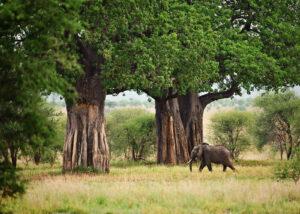Overview
Kitulo National Park is a peaceful and less-visited destination compared to some of Tanzania’s more famous parks like the Serengeti or Ngorongoro Crater. It is an ideal place for nature lovers, botanists, and those seeking a tranquil natural retreat.
Kitulo National Park, located in southern Tanzania, is a protected area known for its stunning floral diversity, particularly its wildflowers. It is often referred to as the “Serengeti of Flowers” or the “Garden of God.” The park covers an area of approximately 412 square kilometers (159 square miles) and is situated in the southern highlands of Tanzania, within the Mbeya Region.
Floral Diversity: Kitulo is renowned for its rich and diverse array of wildflowers, particularly in the wet season (November to April). The park is home to a wide variety of colorful and unique plant species, including orchids, aloes, and lilies.
Unique Ecosystem: The park’s high-altitude grassland and montane forest ecosystems make it a unique and important area for the conservation of Tanzania’s botanical diversity.
Tanzania, renowned for its rich tapestry of national parks and wildlife sanctuaries, offers a surprising delight for nature enthusiasts and botany lovers in the form of Kitulo National Park. Often referred to as the “Serengeti of Flowers” or “God’s Garden,” Kitulo National Park is a hidden gem that celebrates the beauty of wildflowers and unique ecosystems. In this article, we’ll explore the captivating allure of Kitulo National Park, its overview, history, flora, wildlife, activities, accessibility, and the best time to visit.
History
1. Establishment:
Kitulo National Park was officially gazetted in 2005, but its origins as a conservation area can be traced back to the late 1950s when botanists recognized its ecological significance.
2. Botanical Marvel:
The park is a crucial sanctuary for a wide array of botanical species, especially wildflowers. It’s home to an astonishing 350 species of vascular plants, including 45 varieties of terrestrial orchids.
Flora
1. Wildflower Spectacle:
Kitulo is known for its spectacular displays of wildflowers, particularly during the wet season. It’s a haven for rare and endemic species like the Kitulo balsam and the orchid Neobathiea.
2. Botanical Studies:
The park attracts botanists from around the world who come to study its unique flora. The diversity of plant life makes it a living laboratory for botanical research.
Wildlife
1. Birdlife:
While Kitulo National Park may not have the large mammals found in other Tanzanian parks, it’s a paradise for birdwatchers. The park is home to an impressive variety of bird species, including the Denham’s bustard and the blue swallow.
2. Endemic Amphibians:
Kitulo also supports some unique amphibians, including the Kihansi spray toad, which was once believed to be extinct in the wild.
Activities and Attractions.
Safari Activities in Kitulo National Park
1. Botanical Walks:
Exploring the diverse flora is the main attraction in Kitulo National Park. Guided botanical walks offer the chance to witness the stunning wildflower displays and learn about the park’s unique plant life.
2. Birdwatching:
For bird enthusiasts, Kitulo provides opportunities to spot both resident and migratory bird species. It’s a birder’s paradise, with plenty of photographic opportunities.
Birdwatching: In addition to its botanical wonders, Kitulo National Park is a haven for birdwatchers. The park is home to various bird species, and it’s an excellent place for bird enthusiasts to spot both resident and migratory birds.
3. Trekking and Hiking: Visitors can explore the park on foot through a network of walking trails that provide opportunities for trekking and hiking. The park offers fantastic panoramic views of the surrounding highlands.
4. Conservation: Kitulo was designated a national park in 2005 to protect its unique flora and fauna. The park’s conservation efforts are crucial for preserving the diversity of plant species found in this region.
How To Get There & Best Time As Well As The Accommodation Options
How to Get To Kitulo National Park
1. By Air:
The nearest major airport to Kitulo National Park is Songwe Airport, which is approximately 50 kilometers away. You can arrange ground transportation from the airport to the park.
2. By Road:
The park is accessible by road from various locations in Tanzania. It’s roughly a six-hour drive from Dar es Salaam and a five-hour drive from Mbeya.
Best Time to Visit Kitulo National Park
The best time to visit Kitulo National Park is during the wet season, which typically runs from November to April. This is when the wildflowers are in full bloom, and the park becomes a botanical wonderland. However, the park is open year-round, and each season has its own unique charm.
Seasonal Variation: The park’s appearance changes significantly with the seasons. During the rainy season, the wildflowers are in full bloom, while the dry season presents a different landscape. The wild flowers display peak during the wet season/ rainy which is experienced from December and April which is the perfect time for botanists. While the dryer months of September to November are more comfortable for hiking activity, As well as cold and foggy from June to August. Accommodation is available in Mbeya town.
Request Quote
Fill in and send the safari request form, we shall respond as soon as we receive your message. You can also reach us on Whats-app Number: +256753750983 for urgent requests.

